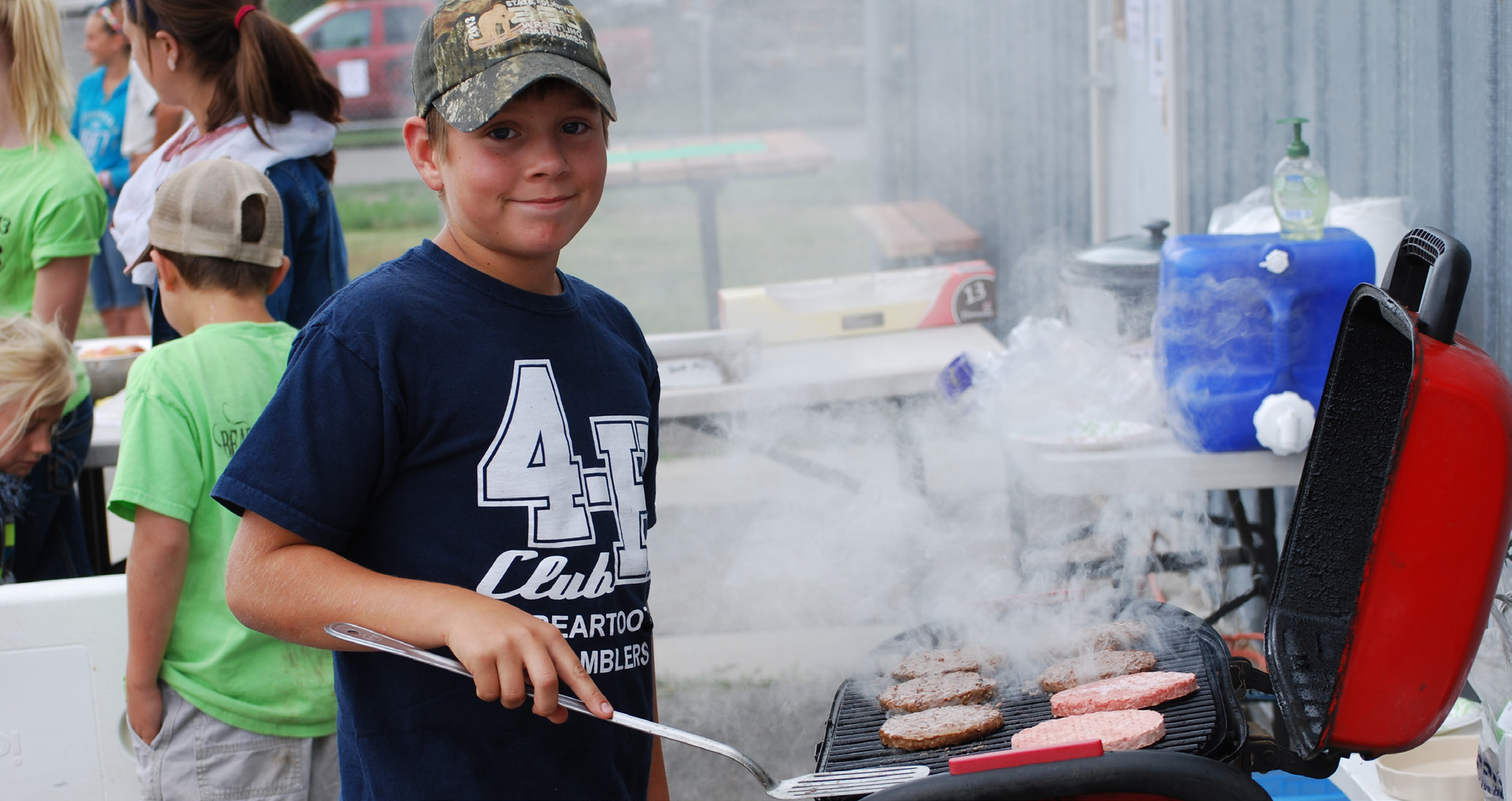Outdoor Food Safety: Prevent a Bummer Summer
Outdoor cooking is fun whether on a camping trip, in the backyard or tailgating. It also brings people together to cook, eat and enjoy being in the great outdoors. No matter the season when cooking outdoors, it is important to be mindful of food safety and protect friends and family from foodborne illness.
It’s important to follow food safety guidelines for outdoor storage and cooking. The U.S. Food and Drug Administration recommends keeping food out of the temperature “Danger Zone” to minimize bacterial growth. Bacteria grows faster when food temperatures are between 70 and 125°F. Keeping food cold, cooking to correct temperatures, and covering food helps lower the risk of foodborne illness. It is important to protect people who are at risk for foodborne illness, which includes children under nine years and adults over 65 years, pregnant women, nursing mothers, and people with weak immune systems. Below is a summary of best practices to ensure safe foods while enjoying the outdoors.
Packing and Preparing Foods:
- Keep raw meat securely wrapped and separate from ready-to-eat foods which have been prepared or cooked ahead such as deli meat, salads, breads, or foods that will be eaten raw such as vegetables and fruit.
- Before leaving home, wash produce under running water including vegetables and fruit with a hard rind/skin. Dry produce with paper towels or clean towels. Mark these as washed.
- Store-bought, pre-packaged foods labeled ‘ready-to-eat’ or ‘pre-washed’ do not need to be washed.
- Avoid thawing at room or outdoor temperature, defrost in the cooler or in cold water or refrigerator.
- If using ice cubes to keep coolers cold, avoid using this ice in drinks. Ice is considered a ready-to-eat food because it is not cooked. Keep a separate cooler for ice and use tongs or a scoop to serve ice. Avoid touching ice with unwashed hands, or scooping with a cup where a person’s hand could touch the ice. This could be a source of contamination.
Water and Washing:
- Have a dedicated supply of clean, potable (safe for drinking) water for use in cooking, cleaning, and drinking.
- Consider bringing a clean preparation surface as well as a container for storing used utensils and equipment if washing isn’t readily available.
- Handwashing is an important step related to food safety. Most foodborne illnesses are the result of poor personal hygiene.
- To correctly wash hands, rinse with warm water and scrub with soap for 15-20 seconds, then rinse and dry hands with a paper towel. Pay attention to remove grime from under fingernails, fingernail beds and between fingers.
- If handwashing is not possible, use disinfecting wipes to remove dirt and grime from hands then use hand sanitizer to reduce bacteria.
Cooler Safety:
- Use clean coolers and reusable ice packs without holes.
- Use block ice or freeze bottled water, which can be used for cooking or washing later. Pre-chill a cooler before packing food.
- Store cold foods at 40°F or lower to reduce bacterial growth.
- If food will be in a cooler for multiple days, pack in the order the food will be used. Starting with frozen food can help keep other food cold.
- Keep coolers tightly closed and out of direct sunlight; cover with a thick blanket or tarp to help keep temperature low.
- Limit the number of times a cooler is opened to keep contents cold longer. Use a thermometer to ensure temperature is cool enough.
- Use a separate cooler for drinks.
Cooking and Serving (Keep Hot Foods Hot, Cold Foods Cold):
- When preparing food outdoors, keep raw foods separate from ready-to-eat foods by using separate cutting boards and using a clean serving plate for cooked meats.
- Don’t re-use marinade or juices from raw foods unless they are boiled.
- Cook food to safe internal temperatures. Steak and seafood 145°F, ground meat, injected meat, or mechanically-tenderized meat 155°F, all poultry or stuffed food 165°F and leftovers 165°F.
- Pack a digital thermometer to measure temperatures. To measure the temperature of hamburger patties, place the thermometer between two patties. For thick cuts, measure the thickest part of the meat.
- Use ice packs under plates or bowls, and a large tray or inflatable salad bar filled with ice to keep foods out of the “Danger Zone.”
- If it is above 90°F, food should not be left out for more than an hour. The maximum temperature cold food should reach is 70°F.
- Flies are pests and carry a foodborne illness called Shigella spp. which can make people sick. Cover food dishes and bowls to prevent flies from landing on food. Mesh food tents or plastic wrap can help keep flies and other insects off food.
- When in doubt, throw it out. Foods may not smell or look off but can still pose a foodborne illness risk.
Montana offers beautiful places to enjoy outdoor activities like camping, hiking, and boating with friends or family members. It is important to avoid foodborne illnesses by practicing food safety for all steps of handling food during outdoor adventures. For more information contact the local MSU Extension office.

Photo: Lisa Terry, MSU Extension
Wendy Wedum is the MSU Extension Family and Consumer Sciences and 4-H agent in Pondera County; Jona McNamee is a retired MSU Extension Family and Consumer Sciences agent in Cascade County.
